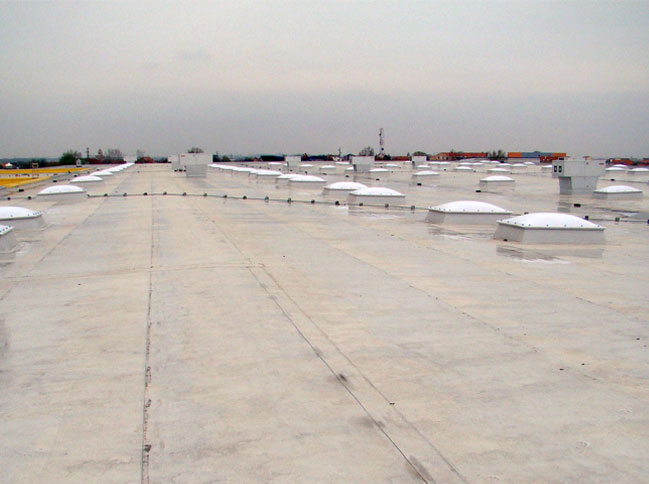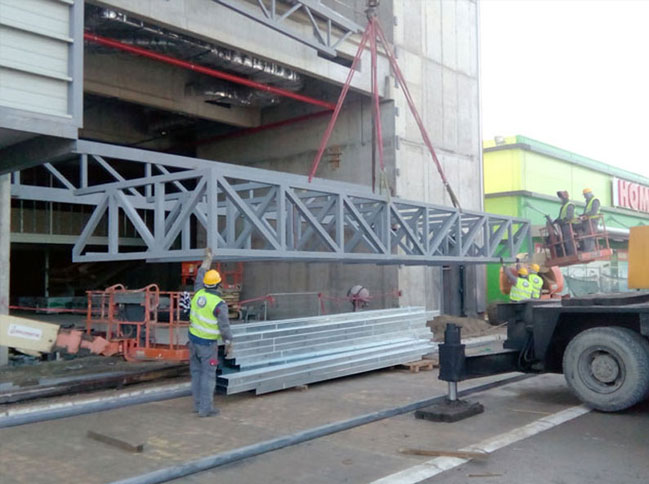Base
The most frequent base of the stacked system is high-profile steel trapezoidal (TR) sheet metal that is set over the roof construction. It serves as a bearing element for hydro and thermal isolation that is set over the sheet metal. Depending on the roof construction and calculated load capacity, the height of trapeze is usually 85 – 155 mm, while sheet metal thickness is 0,75 – 0,85 mm. TR sheet metal is bound to the construction by bolts or anchors.
The stacked system can also be placed directly on the concrete slab.
In both cases, as a preparation for the next layer, ”vapor barrier” is set on the base. It is a polyethylene (PE) foil 15 μm – 20 μm thick, depending on the use of the structure, the role of which is to prevent penetration of warm air from the structure into the layers of thermal isolation. During installation, special attention is paid to the complete sealing of all penetrations as well as to the overlaps at the mutual connections of the membrane.
Thermal isolation
Thermal isolation is obtained by placing isolating material in several layers on the base. For this purpose, thermal isolation boards made of stone wool, extruded polystyrene (XPS) or expanded polystyrene (EPS) are used.
Layer thickness depends on the calculation in accordance with the design, but setting several layers is mandatory in order to obtain demanded performances of stacked system.
Hydro-isolation
Over the thermal isolation layer a hydro-isolation membrane is placed in one layer, and it is made of polymeric materials (PVC, TPO or EPDM). Common characteristics for such materials are resistance to weather impacts and UV radiation, elasticity and durability, as well as satisfaction of fire protection norms. The membrane is mechanically fastened to the base.
TPO [thermoplastic polyolefin] material is a mixture of artificial rubber and polypropylene. A membrane of this material is basically thermoplastic polyolefin that is very resistant to weather impacts and UV radiation, and it is reinforced with polyester mesh. It is flexible and not harmful for environment. Folding joints are connected with hot air.
PVC [polyvinil chloride] membrane is made of modified polyvinyl chloride, which is a homogenous material and as such not susceptible to aging. The membrane retains high elasticity at low temperatures, which allows its use in all weather conditions. It has excellent fire protection features. It is also connected with hot air.
EPDM [ethylene propylene diene monomer] is a one-layer membrane of synthetic rubber. It is extraordinary durable and resistant to weather impacts. It is also very flexible at low temperatures so that it excellently withstands dilatations of the building during temperature changes. It can be with fire protection surface or reinforced by a mesh of polyester fibers. EPDM membrane is not welded with hot air, but the folds are joined by special adhesive and bands.
Fastening
The way of fastening depends on designed load based on analysis of wind and corrosion impact on the complete system. On this basis, type, number, and distribution of fastener that will be used are prescribed.
In the practice, plastic dowels are most often used, which are set through the membrane and layers of thermal isolation and fastened to the base by a metal bolt.


